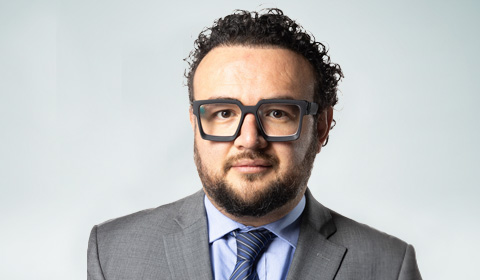The opportunities
The most immediate strategic prospects for insurers in the Latin American market stretch across three main areas.
An emerging target market
Successful product development starts not with ideas for innovative offerings but with a deep understanding of a target market. In Latin American, that is the emerging middle class.
Latin America’s middle class has more than doubled in the past 30 years, from 120 million to 274 million people.3 Better still, this growth has accelerated in the past two decades. Today, 48% of the Latin American population is considered middle class, up from 32% in 1981.4
This growth is not happening at the expense of the wealthy but rather for the benefit of those formerly considered part of the region’s poor. The percentage of those in Latin America’s lower class has shrunk and now equals that of the newly formed middle class.5 Middle-class growth has been fueled by a combination of job creation that has reduced unemployment rates and a shift away from informal employment, such as day labor, small-scale manufacturing or agriculture, or unlicensed transportation services.
That said, the World Bank estimates that one third of those considered middle or upper class in Latin America are one shock away – such as a natural disaster, serious illness, or loss of a job – from being pushed back into poverty.6 That makes financial protection through insurance an increasingly attractive option.
Low penetration
The Latin American market is largely untapped when it comes to insurance protection. For example, whereas roughly 50% of those in the US have life insurance, less than 15% of the Latin American population hold life policies.7 Insurance density – defined as premiums paid annually per capita – is dramatically less in Latin America ($295) than in the United States ($7,500).8
Coupled with the growth of the middle class, this low pentation further highlights the opportunity in Latin America.
A waiting partner
So how do insurers enter this emerging market? Local players dominate around two-thirds of Latin America’s health insurance and life insurance business, and approximately half of the non-life market.9 Global companies make up most of the other one third, with regional players holding around 2% of GWP.
Establishing strategic alliances with financial institutions has proven to be a highly effective strategy for driving the growth of bancassurance services in the region. RGA has partnered with BBVA to expand the reach of its products in the Latin American market. Additionally, RGA, in collaboration with one of its leading global partners in the insurance sector, is in the process of signing a contract with a prominent worldwide financial services company to develop a new product for their customers. A strong relationship with bancassurance ensures vertical integration and access to diverse distribution channels, fostering product innovation
For example, among RGA’s standout products in Latin America is a surgical product that differs from traditional offerings. Rather than covering a specific set of conditions, it excludes a set list of diseases and events and covers any qualifying surgery requiring hospitalization for at least 48 hours. The offering was designed in conjunction with BBVA, the largest bancassurance player in Mexico, and has been well received by the market.
The challenges (and potential solutions)
Additional obstacles must be weighed by insurers looking to enter or expand in Latin America. These hurdles speak to certain realities about the market not seen in more developed regions, such as the United States, Europe, and much of Asia.
Low digital adoption
Digital-only products tend to struggle in Latin America. The emerging middle class has traditionally not had the financial means or lived in areas with the infrastructure needed to access technology-driven products. According to a 2022 survey by McKinsey and LIMRA, Latin American consumers appreciate digital interaction, with more than two-thirds beginning their search for life insurance online. However, the majority of those policies are not ultimately purchased through digital channels.10
Agents and brokers remain the dominant distribution channel in Latin America. RGA learned the extent of that dominance when attempting to introduce an innovative product for Type 2 diabetics. Dubbed Amae, it used mobile applications that enabled continuous interaction with the insured, providing personalized health reminders, access to medical services, and health status tracking. Through targeted campaigns on platforms such as Facebook and Instagram, RGA created an active community of interested users, reaching a population that had traditionally had less access to insurance products.
However, when Amae officially launched, it failed to find traction. Among other lessons, RGA learned that consumers in Latin America generally are not yet ready for a fully digital experience. As a result, RGA is transitioning Amae toward a hybrid experience, which includes agent interaction throughout the customer journey, to offer a more personalized service aligned with local expectations.
Distribution channel dilemma
While online insurance sales have gained ground in Latin America, customers in the region still prefer agent interaction. However, products designed for low- and middle-income sectors tend to be less attractive to agents due to their comparably low commissions.
For this reason, RGA has focused on establishing strategic alliances with financial institutions. This has proven to be an effective distribution channel. Once again, a hybrid model that combines digital sales with personalized agent advice at key points in the customer journey remains essential to adapting to local preferences.
Profitable and resilient
From Caribbean shores and windswept Patagonian plains to the bustling global cities of Mexico City and São Paulo, Latin America is a region rich in opportunity for insurers. The real question, however, is whether that opportunity is profitable. Data indicates it can be. According to a study by McKinsey & Company, the Latin American insurance industry is highly profitable, as measured by return on equity (ROE), compared to the global average and all other major insurance markets. The McKinsey analysis showed ROE in Latin America was 22.3% in 2019 and 16.6% in 2022, far greater than the global average of 10.4% and 8.8%, respectively.11
In addition, the Latin American market has proven resilient. Though profitability growth slowed during the COVID-19 pandemic, it remained healthy throughout, generating $9 billion in profit in 2020, $6.3 billion in 2021, and $10.4 billion in 2022.12
This profitability and resiliency further solidifies Latin America as an area of opportunity for our industry going forward.
Learn more about RGA’s Latin American team and explore how to best introduce new products and grow existing offerings in the region. Start your journey today.




